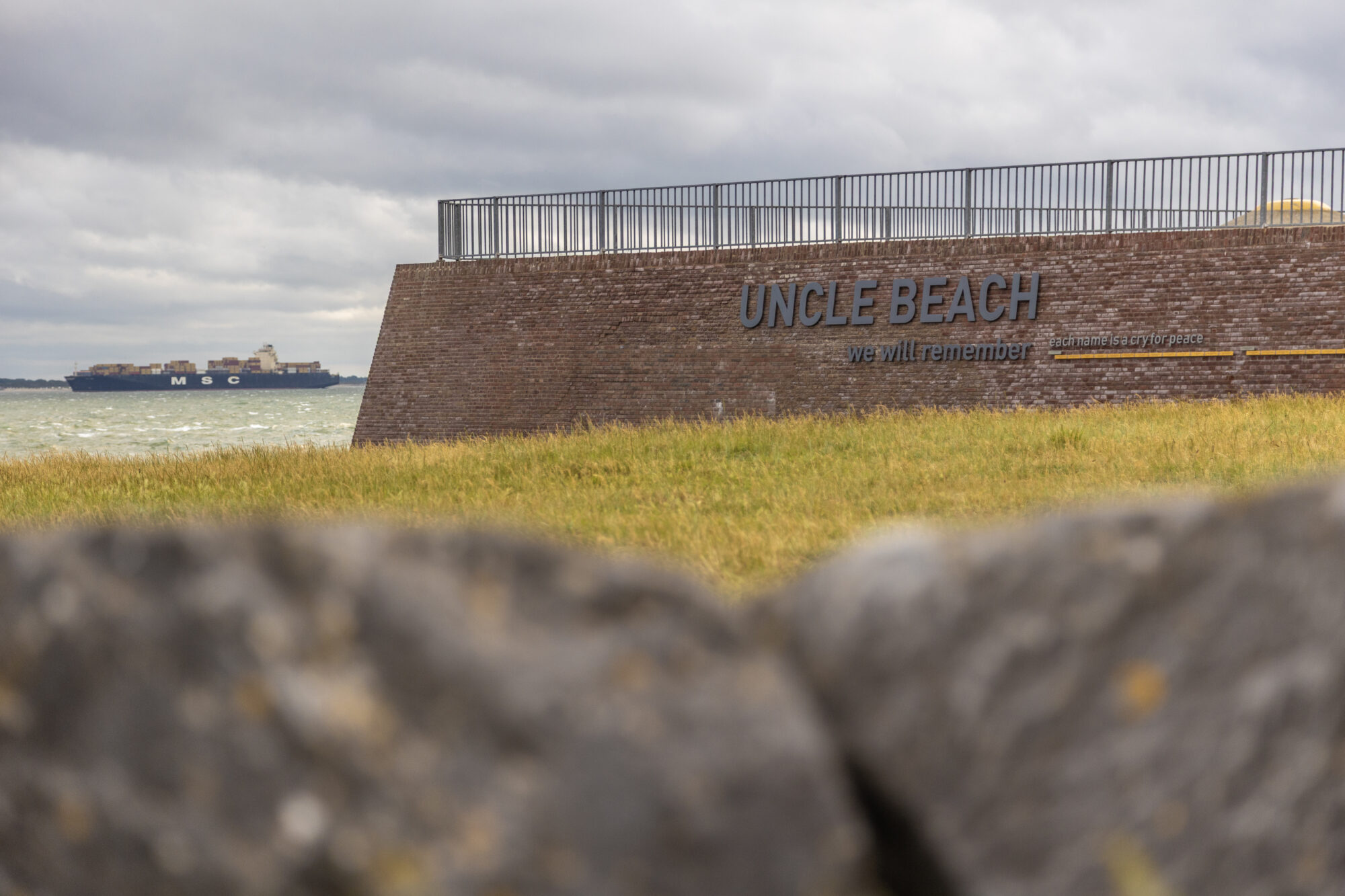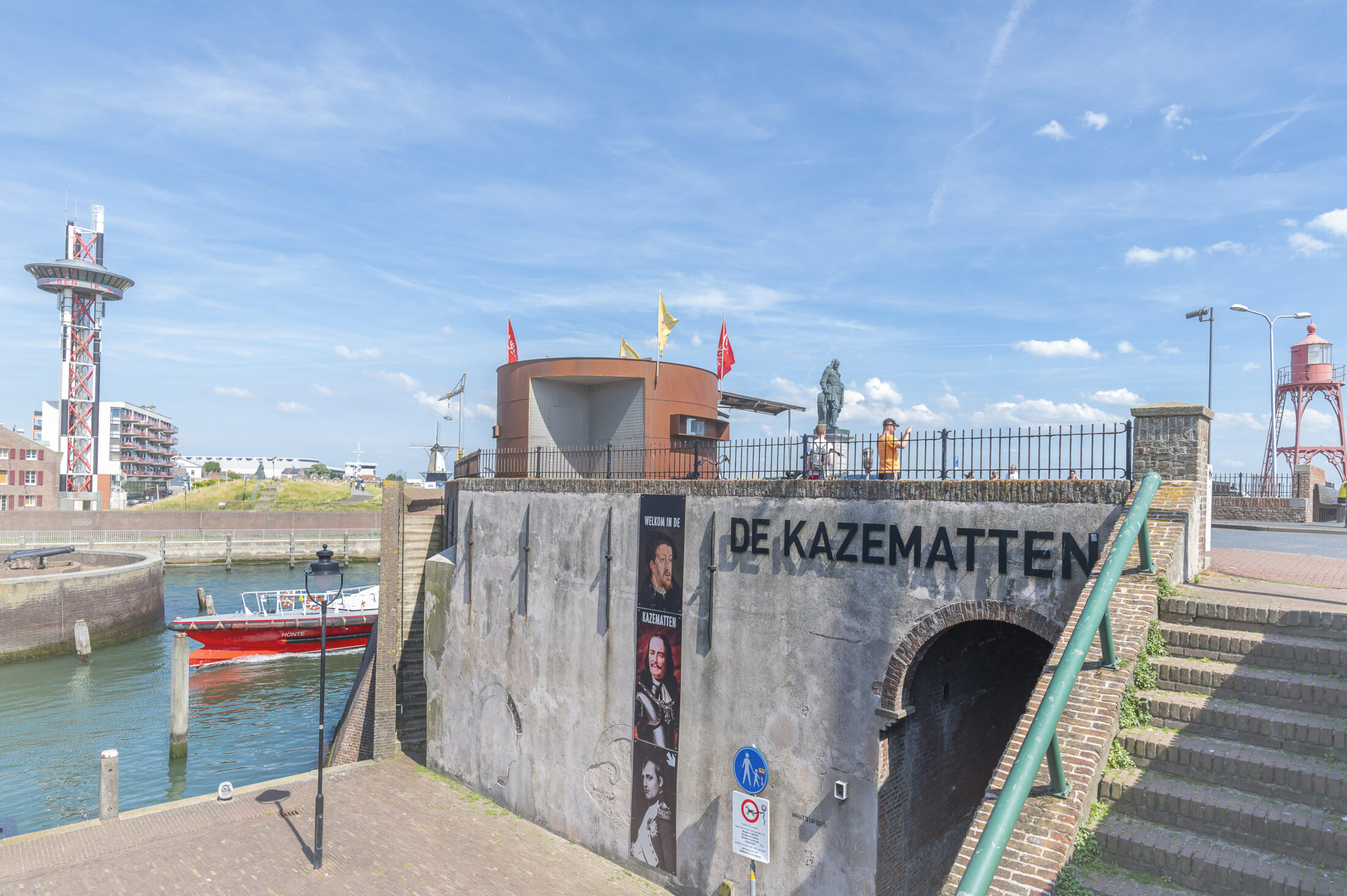Did you know that Vlissingen was granted city rights as early as the 14th century? With this, the fishing settlement grew into a major port and fortress city. Thanks to its strategic location on the Westerschelde, Vlissingen played a key role in the maritime history of the Netherlands for centuries. Pirates, merchants, soldiers and sea heroes: they all left their traces in the city.
That rich history is still visible today. During a walk through Vlissingen you will discover how historical sites and modern elements alternate and reinforce each other. From imposing statues and centuries-old defenses to cozy squares and special towers, Vlissingen breathes past and present.
Join us as we explore these iconic places.
Uncle Beach
Uncle Beach
Start your historic walking tour at Uncle Beach, a place of deep significance for Flushing and all of Zeeland. This is where Allied troops landed in November 1944 during the Battle of the Scheldt, a decisive moment in the liberation of the city. Today, Uncle Beach is a quiet, open spot by the sea - a combination of memorial and viewing point.
As you look out over the water, you can still easily imagine how the soldiers landed here at the time under difficult conditions. Now it is a place where history is palpable and the horizon symbolizes freedom. In the evening it becomes extra special: the setting sun casts a warm glow over the beach and sea, literally merging past and present here.

Statue of Michiel de Ruyter
Statue of Michiel de Ruyter
Continue to the impressive statue of Michiel de Ruyter, Holland's most famous naval hero. The monument towers high above the promenade and commemorates the man who led the Dutch fleet to many victories in the 17th century.
From this point you have a sweeping view of the Western Scheldt, where large ships still pass by daily. It is the perfect place to start the walk: you immediately feel the connection between maritime history and today's lively port city.

The Casemates (temporarily closed)
The Casemates (temporarily closed)
Then walk back down through the Casemates, a network of underground passages and defenses built as early as the 16th century. For centuries, they protected Flushing from outside enemies.
Today, the Casemates are, above all, a fascinating reminder of the turbulent times the city went through. As you walk through this extraordinary structure, you can easily imagine how soldiers used to walk their guard rounds or hide here. For lovers of history, this is a place not to be missed.

The Prison Tower
The Prison Tower
End your walk at the Prison Tower, a striking remnant of Vlissingen's old city walls. The tower was built centuries ago as a defensive structure and later served as a prison. Today, the building has a very different purpose: you can enjoy culinary delights in an attractive restaurant overlooking the Westerschelde.
The contrast between centuries-old walls and modern comforts makes the Prison Tower a unique experience. As you dine or have a drink, you look out over the same waters once traversed by ocean liners and war fleets. A worthy conclusion to a walk full of history.

Flushing: where past and present meet
Flushing: where past and present meet
A walk through Vlissingen is a journey through time. The city takes you from the glory days of seafaring to the lively present, where culture, history and relaxation blend effortlessly.
Whether you come for a short city walk, a day full of history or a culinary conclusion overlooking the sea, in Vlissingen you will discover again and again how rich the past is and how vibrant the present.

